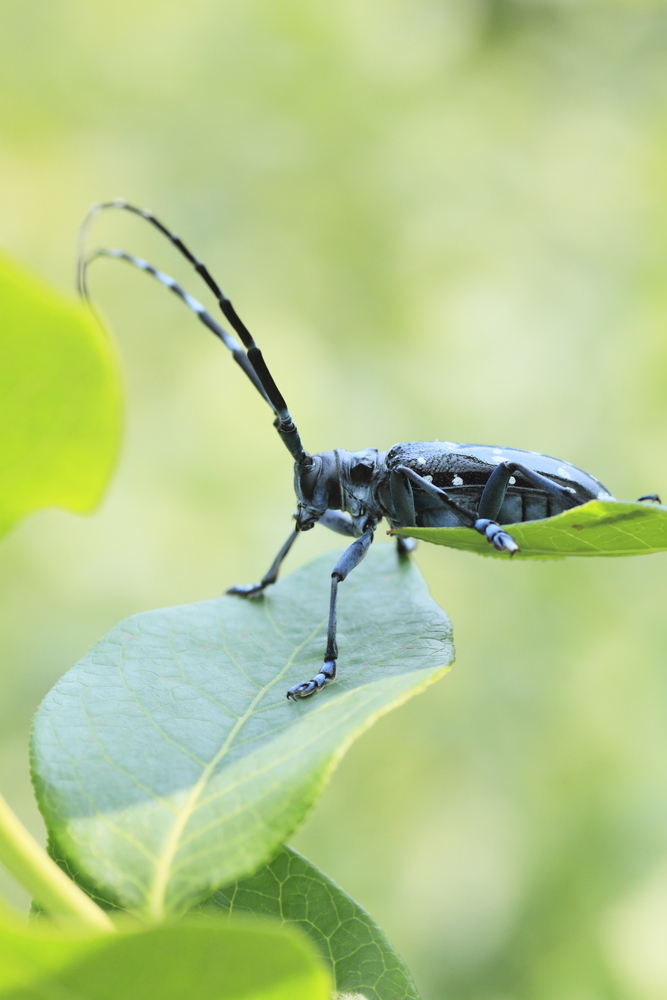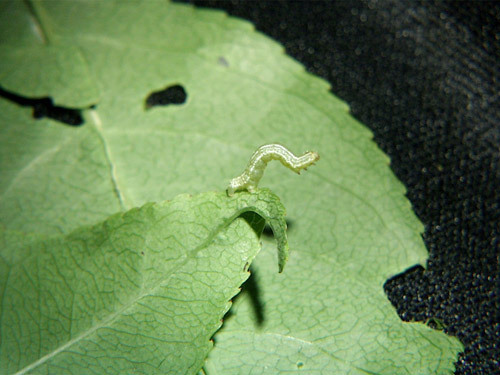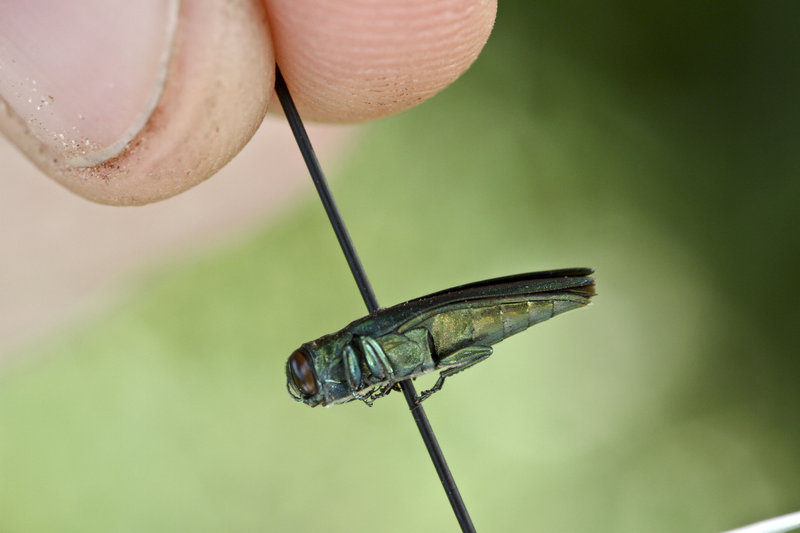If it seems that the plants you grow are under heavier attack than ever from insects and diseases, it’s time to figure out a strategy for defense. Coastal Maine Botanical Gardens in Boothbay can help.
The garden recently joined the Sentinel Plant Network and plans to offer a first-detector training session on how to spot new pests or diseases when they first get to the state rather than when they are firmly established. A class planned for last week was canceled, but is expected to be rescheduled.
“As part of our participation in the sentinel program,” said Justin Nichols, a horticulturist at the garden, “we monitor our grounds for any threat — any new pest or disease — that would have an environmental impact.”
The Sentinel Plant Network is a partnership between the American Public Garden Association and the National Plant Diagnostic Network, and is funded in part by the U.S. Department of Agriculture.
Nichols said that although as part of the agriculture department, the Animal Plant Health Inspection Service tries to keep potential threats from making it into the United States, the Sentinel Plant Network can provide a backup to those inspections.
“We will conduct at least one training program each year to afford people from whatever walk of life to come in and learn how to scout for pests and diseases, what to look for and what can be done to stop them,” he said.
Nichols listed the pests that are at the top of the watch list, including the winter moth, emerald ash borer, longhorn beetle and hemlock woolly adelgid.
“One of the ones we have been looking for is the winter moth, which has been found in Harpswell, but we didn’t find it here” at the botanical garden, Nichols said.
Winter moth is common in Europe, but is kept under control there by natural predators. It showed up in Massachusetts almost 10 years ago, and has been a major problem there. The moths come out in November and are prevalent, with males seen flying around outdoor lights through January. They mate with the flightless females, who lay eggs. The damage comes in the spring, when the winter moth caterpillar emerges, eating leaf and flower buds on deciduous trees and shrubs. This can cause major damage to fruit crops.
Nichols said the hemlock woolly adelgid was found recently on Barters Island, next to the botanical garden.
“It has been found in York County all the way to Down East, and it will do a lot of damage if it turns out it can adapt to the cold of the Maine forests,” Nichols said.
The emerald ash borer has decimated the ash trees of Michigan and has reached the Hudson River Valley, but is not yet in Maine.
The Asian longhorn beetle also is not yet in Maine, but has caused major damage in Worcester, Mass.
With all the tree-damaging pests, Nichols said the Maine Forest Service already is serving as a sentinel to find them. But the botanical garden’s efforts will help.
Many of the diseases are brought in by people who move firewood or plants into the state. Nichols said it is now illegal to transport firewood, but still legal to bring in plants.
Nichols emphasized that people should carefully inspect any plants they dig up from one home and move to another. Commercial nurseries have strict inspection programs, but gardeners digging plants on their own can cause problems.
When Nichols leads a training session, he also plans to go into the historical aspect of pests, discussing such problems as chestnut blight, gypsy moth, Dutch elm disease and butternut blight from the past.
GLADIOLUS RUST is not a problem in the same league as winter moth, emerald ash borer or hemlock woolly adelgid — but I think we have it, and it is highly disappointing.
All of our glads this year have developed a rust-colored fungus on the leaves, and the blossoms wizened up before they could come into bloom.
Then I got a call from a Bath reader who had the same problem.
A Google search made me believe the disease is gladiolus rust, which Nichols said he has read about but never seen. He said it was in Europe for quite a while and came to the United States about five years ago.
My next call was to Bruce Watt, a plant disease diagnostician with the University of Maine, who said he has not received any reports of gladiolus rust in the state. I told him I sprayed the rust with Serenade first, which he said probably had little benefit, and then a week later with liquid copper, which he said might have helped.
He also said fungal diseases like gladiolus rust usually die with the leaves, so the bulbs should be OK to use next year.
I am going to send him a sample of the gladiolus rust anyway, so he can confirm that it’s what we have.
And if you want to send him some diseased plants so he can come up with a diagnosis, the address is: Pest Management Office, 491 College Ave., Orono ME 04473.
Being the first one to send him gladiolus rust — if that turns out to be what it is — would show that I am a good garden sentinel.
Tom Atwell has been writing the Maine Gardener column since 2004. He is a freelance writer who gardens in Cape Elizabeth and can be contacted at 767-2297 or at:
tomatwell@me.com
Send questions/comments to the editors.






Success. Please wait for the page to reload. If the page does not reload within 5 seconds, please refresh the page.
Enter your email and password to access comments.
Hi, to comment on stories you must . This profile is in addition to your subscription and website login.
Already have a commenting profile? .
Invalid username/password.
Please check your email to confirm and complete your registration.
Only subscribers are eligible to post comments. Please subscribe or login first for digital access. Here’s why.
Use the form below to reset your password. When you've submitted your account email, we will send an email with a reset code.